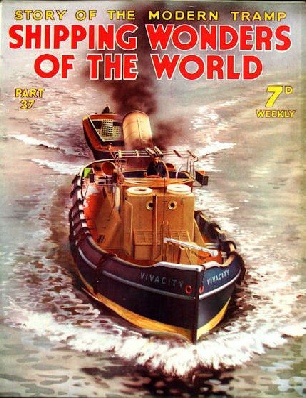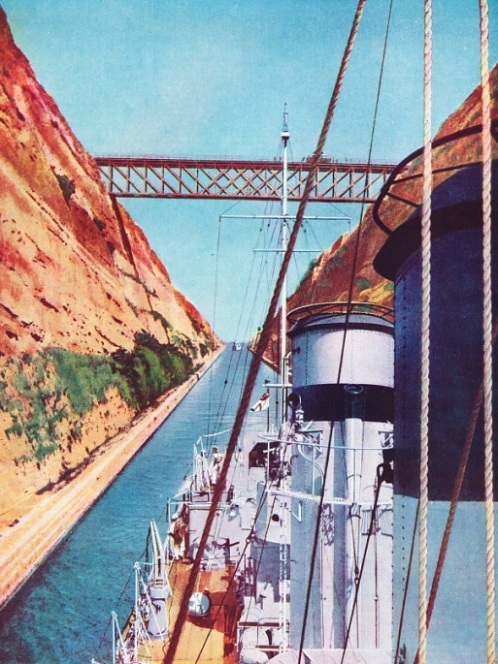
© Shipping Wonders of the World 2012-



Part 37
Part 37 of Shipping Wonders of the World was published on Tuesday 20th October 1936.
This issue included a colour plate illustrating HMS Duncan leading the First Destroyer Flotilla through the Corinth Canal. It formed part of the article on the Corinth Canal. The plate had previously appeared as the cover to Part 7.
The Cover
This week’s cover shows the Thames tug Vivacity passing under a bridge. The picture is particularly interesting because it shows the tug in the act of lowering her funnel, which would otherwise be too high to clear the bridge safely.

Contents of Part 37
The Invincible Armada
The story of the Armada, concluded from part 36.
Dutch Shipping
For long the Dutch were the keenest rivals of Great Britain in maritime interests, particularly when the trade routes to the East were being opened up. Their shrewdness and commercial sense have won the Dutch an important position in world shipping. Industrious, thrifty and businesslike, the Dutch have been a leading maritime nation for many years.
This chapter is the ninth article in the series on Sea Transport of the Nations.
Lubricating Oil Diesel Tanker
A description of the Comanchee, one of the most interesting and important tankers flying the Red Ensign. She was delivered to her owners, the Anglo-American Oil Company, by John Brown & Company, early in 1936. The Comanchee has frequently to discharge complete cargoes at Manchester and her dimensions were largely governed by the dimensions of the locks on the Manchester Ship Canal.
This is the twenty-eight article in the series on Merchant Ship Types.
Wellington, New Zealand
Although Auckland, in North Island, is the largest city in New Zealand, Wellington, also in North Island, is the capital of the Dominion and the chief transhipment port. The harbour of Wellington, set in magnificent scenery, is called Port Nicholson.
This chapter is the eleventh article in the series on Great Ports of the World.
Modern Tramp Design
In recent years the introduction of the cargo liner has dealt a heavy blow at tramp shipping, which was regarded as the backbone of the British Merchant Service. Technical improvements, however, promise partly to restore the tramp’s lost position in a rapidly changing shipping world. To the uninitiated the words “tramp steamer” usually imply a rather decrepit little ship, somewhat in need of a fresh coat of paint, in which the crew is over-worked and has to endure perpetual petty discomforts.
The Corinth Canal (colour plate)
